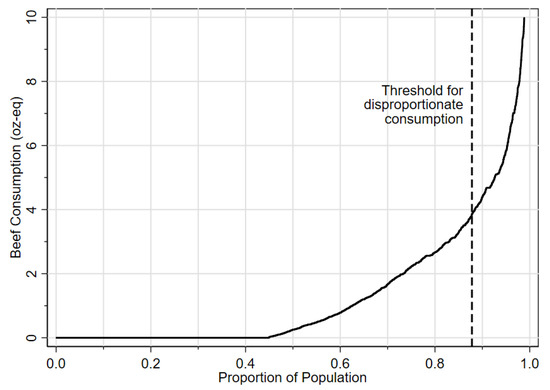This is the same study posted somewhere else. The survey is flawed in that they asked what people ate in the last 24 hours.
That simply means that those people ate a lot in the last 24 hours. Should have been over a week or a month to get a better distribution.
“We analyzed 24-h dietary recall data from adults (n = 10,248) in the 2015–2018 National Health and Nutrition Examination Survey (NHANES).”
Exactly. In a world where people at a big steak dinner once a week, you’d see a similar result.
deleted by creator
I responded to your comment before, but didn’t sufficiently think it through, so I deleted my previous response.
You raise a good point, and they do indeed acknowledge this flaw in the study:
One limitation of this work is that it was based on 1-day diet recalls, so our results do not represent usual intake. Averaging both days of data available on the NHANES would not address this problem, would reduce our sample size by 15%, and would mix recall methods between an in-person interview (day 1) and one done on the phone (day 2). Still, as a check, we examined day 2 and found the same associations with gender and MyPlate guidance.
Yeah, I feel this is an early report to decide if a larger study is warranted
deleted by creator
That’s such a leading method for gathering the data. You just ate the one cheeseburger you have every couple of months right before the study? Welp, I guess you’re the person responsible for all the beef purchases now!
deleted by creator
If that was all that was flawed… who actually takes time to do nutritional surveys? People who care about nutrition. And the current fad is that you should eat less meat. So a disproportionate number of them are going to under represent how much meat they eat. So it should say, only 12% of people who answered this survey were honest.
@pizzaiolo I first read this as 12 individuals. Thought that seemed excessive then remembered some eating contests I’ve seen in Texas…
Glad I’m not the only one that read it that way. Shame on me for reading the internet before the coffee kicks in.
Burgers Georg, who lives in a cave and eats over 10000 burgers a day, is an outlier and should not have been counted.
FWIW, I’m not a huge fan of MDPI; they’ve got something of a reputation for being shoddier on peer review than some other journals. I’d look for replication elsewhere before fully trusting this.
This just sounds like another version of the 80:20 rule or the Pareto principle.
“The Pareto principle states that for many outcomes, roughly 80% of consequences come from 20% of causes”
It is. This sounds like a hit piece. You could use this argument to make anything sound bad.
Most surprising here, imo, is that only 12% of the population eats more than 4oz. of beef per day. That honestly feels low to me.
You might be one of the 12%.
Running the math on my own habits, I don’t think so, but I just figured some people are enough burgers alone to push the numbers higher than that
Dude that’s so SO much beef WTF you mean that you’re surprised?
I wouldn’t have been surprised to hear that 10% of the population ate a 4oz burger for lunch every single day. Not saying it’s good or not a lot, but just thought more people did it
deleted by creator
@idkwhatimdoing @pizzaiolo European here. I doubt if I average more than 4oz of beef per fortnight. And yes, I have the occasional steak.
I think it’s because people also have preferences for other types of meat. E.g. I always prefer chicken, but it’s uncommon here so usually I go with the cheapest option: pork. I’m appalled at how high I’ve let my meat consumption slip, but this paper would still classify me as not excessive beef consumption.
Does guys eat beef for breakfast
I’m doing my part!
I’m one of them
This shit is so fucking stupid
What do you mean? I eat a lot of steak and am unlikely to change that too much, but these are just numbers, and they seem to check out.
I only eat meat and veggies
Pork, beef, duck, chicken, lamb, venison and a lot of broccoli
deleted by creator
It’s not that the study methods are bogus, but that they don’t actually tell us what the headline says, which, incidentally, is not the title of the study. The actual title of the study is: “Demographic and Socioeconomic Correlates of Disproportionate Beef Consumption among US Adults in an Age of Global Warming”
And from the abstract:
The objective of this study was to identify the demographic, socioeconomic, and behavioral correlates of disproportionate beef consumption in the United States.
So the study actually does do a good job of that, because 24-hr recall is sufficient to tell us the relative rates of high beef consumption in different population segments.
What it’s not good at differentiating is determining whether it is fewer individuals consuming beef more frequently or a greater number of individuals consuming beef less frequently.
That is to say, 10% of the population consuming >4oz of beef every day compared to 20% of the population consuming >4oz of beef every 2nd day would appear the same. It still does tell us how much beef is being consumed by the population, however, so the data isn’t useless.
deleted by creator
Data is garbage




